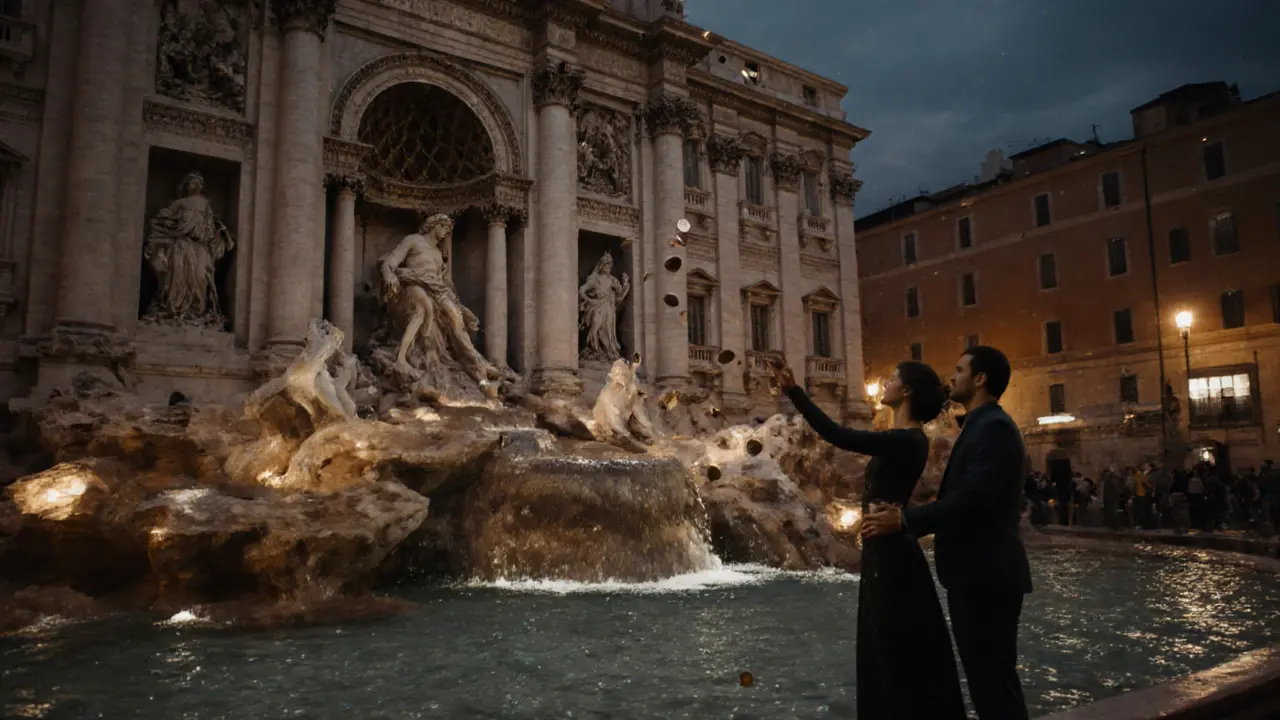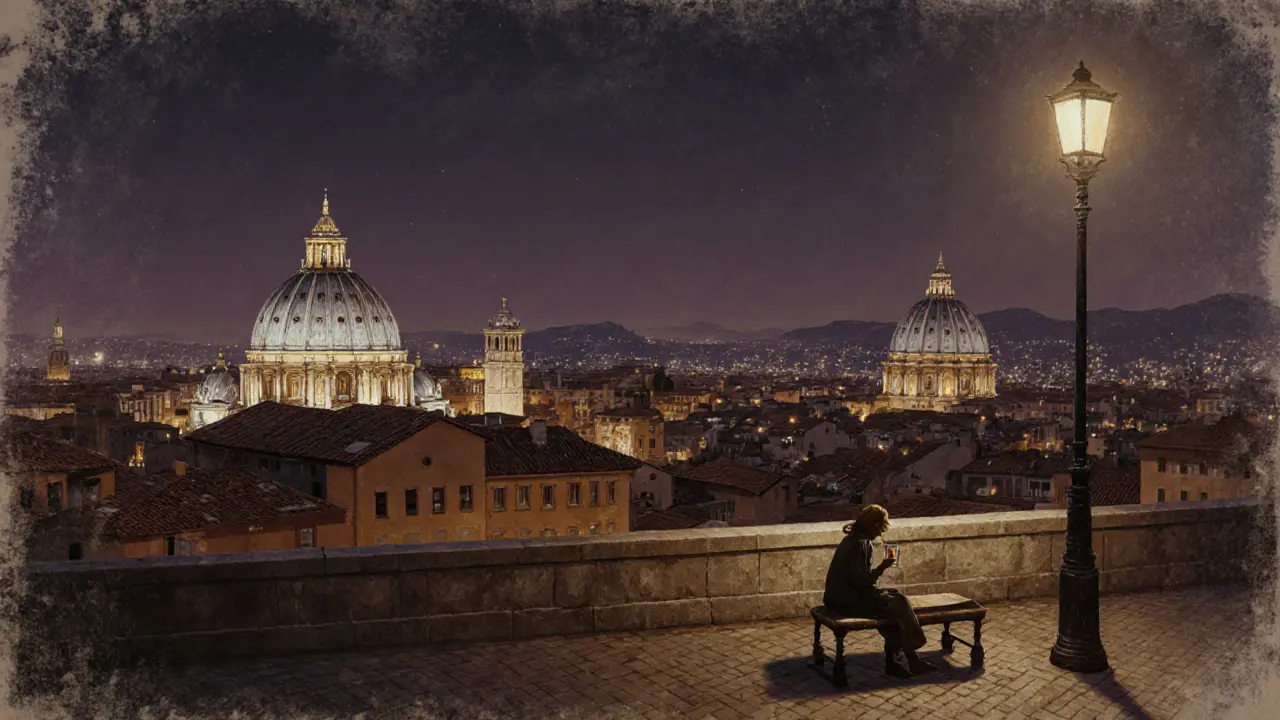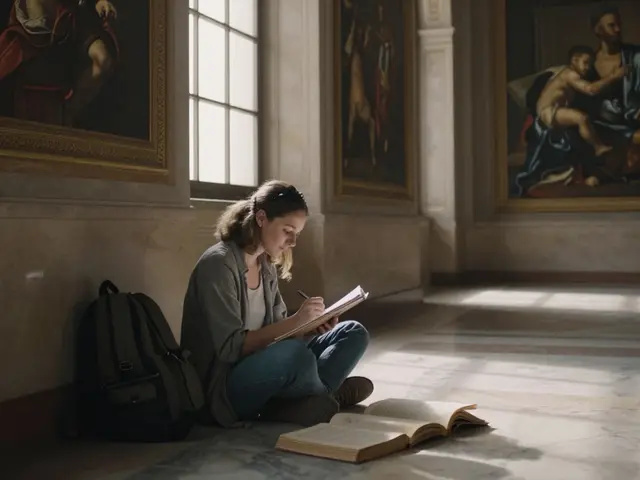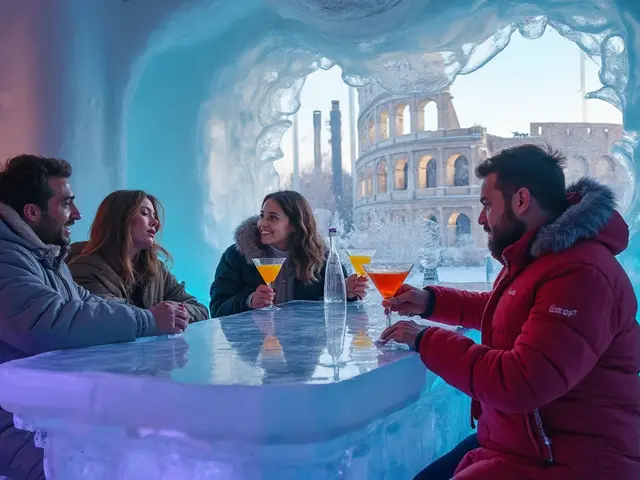
When the sun sets over Rome, the city doesn’t sleep-it transforms. The same cobblestone streets that buzz with tourists by day turn into lantern-lit corridors of music, laughter, and history. You don’t need a ticket to a museum or a reservation at a fancy restaurant to feel the magic. Some of Rome’s best moments happen after dark, when the Colosseum glows under soft lights and the Trevi Fountain echoes with whispered wishes.
Walk Through the Historic Center After Dark
There’s no better way to start your night than walking through the heart of Rome without the crowds. The Pantheon, usually packed with selfie sticks by noon, becomes a quiet cathedral of stone and sky after 9 p.m. The fountain in front of it still trickles, and the few people around speak in hushed tones. You can sit on the steps, watch the light shift across the dome, and feel like you’ve stepped into a painting.
Head down Via dei Fori Imperiali toward the Colosseum. By night, it’s not just a ruin-it’s a silhouette against the stars. The arches glow with subtle spotlights, and the sound of distant guitar players drifts from nearby piazzas. No one shoves you for a photo. No one yells for you to move. You can stand right in front of it, alone with 2,000 years of history.
Throw a Coin in the Trevi Fountain
Yes, it’s touristy. But skipping it because it’s crowded during the day is a mistake. At night, the Trevi Fountain becomes something else entirely. The water sparkles under golden lights. The statues seem to move in the dim glow. And the crowd? It’s not the rush of midday-it’s couples, solo travelers, and locals who’ve come to make a wish.
You’ll see people lining up to toss their coins. The tradition says you’ll return to Rome if you throw a coin over your left shoulder with your right hand. It’s not magic, but it’s ritual-and in Rome, rituals matter. The coins pile up to over €3,000 a day. Every night, city workers collect them and donate the money to charity. So your coin doesn’t just make a wish-it helps feed families.
Enjoy a Gelato While Strolling Through Piazza Navona
Piazza Navona is alive at night. The fountains still splash, but now they’re lit in soft blues and whites. Street artists sketch portraits, and musicians play old Italian ballads on accordions. The air smells like roasted chestnuts and vanilla gelato.
Grab a cone from Giolitti or La Romana-both have lines, but they move fast. Try the pistachio at La Romana. It’s not neon green like some places. It’s earthy, nutty, and rich. Eat it slowly as you circle the piazza. Watch the couples slow-dancing to live music. Watch the kids chasing bubbles from a street performer. This isn’t just dessert. It’s the heartbeat of Rome after dark.

See the Vatican Museums and St. Peter’s Basilica Without the Crowds
Most people don’t know it, but you can visit the Vatican at night. The Vatican Museums offer evening tours on Fridays from April to October. Even outside those months, St. Peter’s Basilica stays open until 7 p.m. in winter and 6 p.m. in summer. But here’s the trick: if you go right at closing time, you’ll be among the last few people inside.
The Sistine Chapel, usually packed shoulder-to-shoulder, feels like a private concert. Michelangelo’s ceiling-so detailed you need a guidebook to spot all the figures-glows under the dimmed lights. The silence is thick. You can stand under the Last Judgment and just breathe. No one’s taking selfies. No one’s talking on their phone. It’s just you and centuries of faith.
Afterward, walk across the square to St. Peter’s Basilica. The dome, lit from below, looks like a star fallen to earth. Climb the 551 steps to the top if you’re up for it. The view of Rome at night-from the Vatican to the Castel Sant’Angelo-is unforgettable. You’ll see the city spread out like a map of light.
Have Dinner at a Trattoria Off the Beaten Path
Don’t eat at the restaurants right outside the Colosseum. They’re expensive, overpriced, and serve the same carbonara every night. Instead, head to Trastevere. It’s a neighborhood that feels like a village inside a city. Narrow alleys, ivy-covered walls, and red shutters. The restaurants here aren’t fancy. They’re warm.
Try Da Enzo al 29. You’ll need to book ahead-it’s small and always full. Their cacio e pepe is the best in the city. No cream. Just cheese, pepper, and pasta cooked just right. The owner, Enzo, still works the kitchen at 80. He’ll ask where you’re from, then bring you a shot of limoncello on the house.
Or try Flavio al Velavevodetto, tucked under the ruins of the ancient Aqua Claudia. The tables are right next to old stone arches. You eat Roman-style tripe, or saltimbocca, under candlelight. The wine list is short but perfect. A glass of Frascati costs €7. You’ll leave full, happy, and maybe a little tipsy.
Listen to Live Music in a Jazz Club or Underground Bar
Rome’s jazz scene is quiet but powerful. You won’t find neon signs or bouncers. Just a door tucked between a bakery and a tailor. Jazzhole in Monti is the most famous. It’s tiny-barely 30 seats. But the music? World-class. You’ll hear trumpet players who’ve played with Italian legends. The owner, Marco, doesn’t take reservations. You show up, order a glass of red, and listen. No phones. No talking during songs.
For something grittier, try Bar del Cappuccino near Campo de’ Fiori. It’s not a jazz club-it’s a bar where poets read at midnight. The walls are covered in old photos, handwritten lyrics, and ticket stubs from forgotten concerts. The bartender makes an espresso martini with homemade vanilla syrup. It’s not on the menu. You have to ask.

Watch the City Lights From Monte Mario
If you want to see Rome like a local, take the bus or a 20-minute walk up to Monte Mario. It’s the highest point in the city. From here, you can see the dome of St. Peter’s, the dome of the Pantheon, the distant glow of the Colosseum, and the endless stretch of red rooftops.
No crowds. No ticket. Just a bench, a cold drink, and the quiet hum of the city below. Locals come here to smoke, to think, to kiss. You can sit for an hour and not see another tourist. The view changes every 10 minutes as more lights turn on. By 11 p.m., the city feels like it’s breathing.
Take a Nighttime River Cruise on the Tiber
Most people think of Venice for river cruises. But Rome’s Tiber River has its own magic at night. You can hop on a small boat near Ponte Sisto and glide past the Castel Sant’Angelo, the Vatican, and the ancient bridges lit like jewels.
The boats are quiet. No loudspeakers. Just a guide whispering stories about gladiators, popes, and lovers who jumped from the bridges. The water reflects the lights like liquid gold. You’ll pass under arches that have stood since Roman times. You’ll see couples on the banks holding hands. You’ll feel like you’re moving through time.
It costs €15. Lasts 45 minutes. You’ll remember it longer than any museum.
End Your Night with a Spritz on a Rooftop
Every city needs a rooftop bar. Rome’s are different. They don’t have DJs or bottle service. They have views. La Terrazza at the Hotel Raphael has one of the best. You can sip a Aperol Spritz as the sun sets behind the dome of St. Peter’s. The city turns from gold to purple to black. The lights come on one by one.
Or try Hotel de Russie’s terrace. It’s quieter. No one’s taking Instagram photos. Just people sipping wine, talking quietly. The cocktails are made with fresh herbs from the hotel garden. The ice is hand-chipped. The view? Uninterrupted.
You don’t need to stay at the hotel. Just walk in, order a drink, and sit by the edge. Let the night wrap around you. Rome doesn’t rush. It lingers. And so should you.
Is Rome safe to explore at night?
Yes, Rome is generally safe at night, especially in the main tourist areas like the historic center, Trastevere, and near the Vatican. Stick to well-lit streets and avoid isolated alleys after midnight. Pickpockets can be active near crowded spots like the Trevi Fountain or metro stations, so keep your bag closed and your phone tucked away. Most locals and tourists walk around freely after dark without issue.
What time do restaurants close in Rome at night?
Most restaurants in Rome serve dinner until 11 p.m., and many stay open until midnight or later, especially in tourist zones. Trattorias in neighborhoods like Trastevere and Monti often serve until 1 a.m. on weekends. If you’re hungry after 11 p.m., head to a local osteria-they’re more likely to still be serving than fancy places.
Can you visit the Colosseum at night?
The Colosseum itself doesn’t offer regular nighttime tours, but you can visit the Roman Forum and Palatine Hill until 7:30 p.m. during summer months. The exterior of the Colosseum is always visible and beautifully lit after dark. For a guided nighttime experience inside, check for special events during holidays or summer festivals-they occasionally open for evening access.
Are there any free things to do in Rome at night?
Yes. Walking through the historic center, seeing the Trevi Fountain lit up, watching the fountains in Piazza Navona, and strolling along the Tiber River are all free. You can also sit on the Spanish Steps after dark, admire the Pantheon’s exterior, or enjoy a gelato while listening to street musicians. Many of Rome’s best nighttime experiences cost nothing but your time.
What’s the best season to visit Rome at night?
Spring (April-June) and early fall (September-October) are ideal. The weather is mild, the crowds are smaller, and the city feels alive without being overwhelming. Summer nights are warm but busy, and winter nights can be chilly, though quieter and more intimate. If you visit in November, expect shorter days and cooler temperatures-but the lights and atmosphere are still magical.



